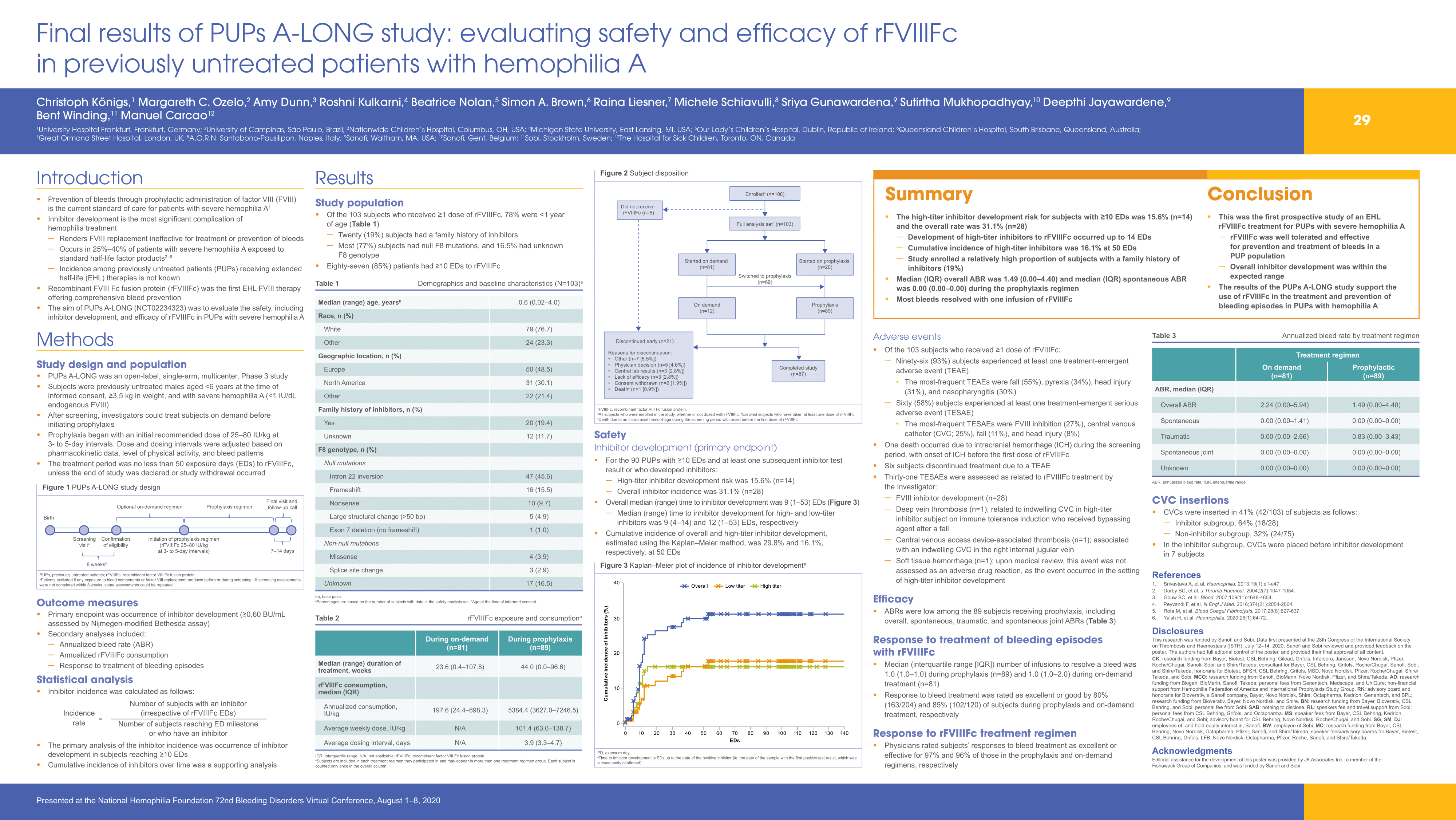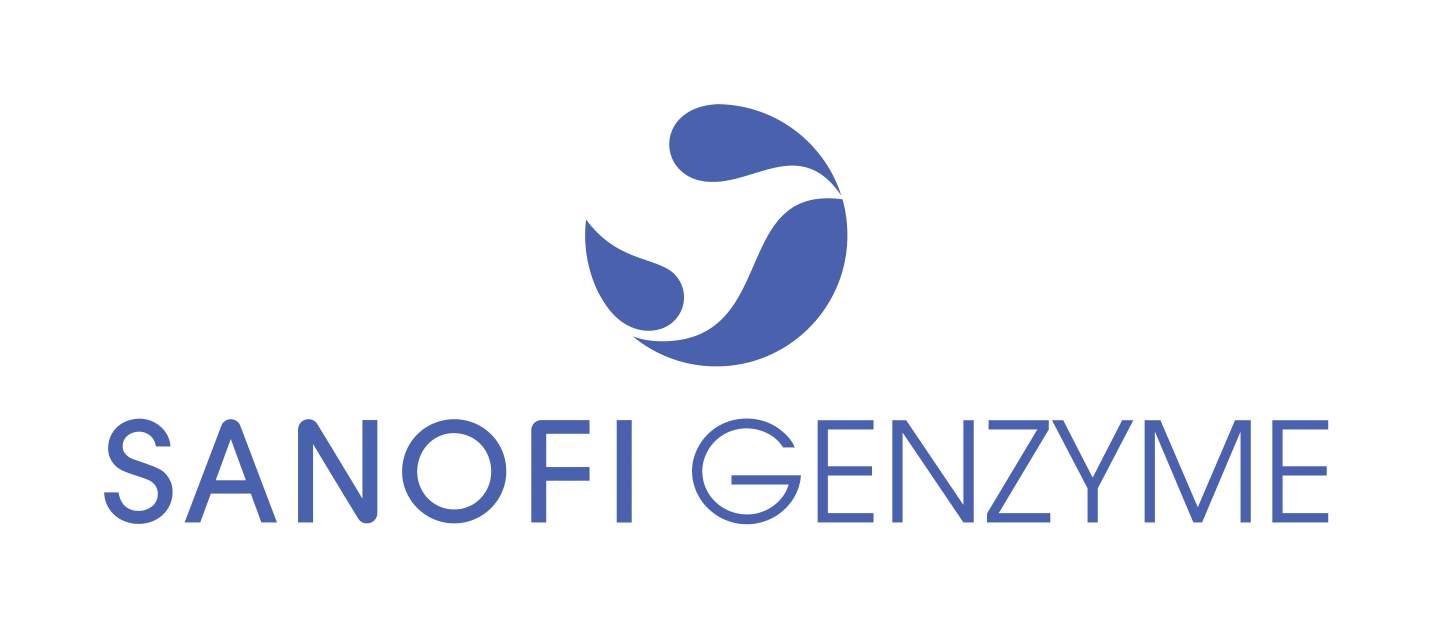National Hemophilia Foundation (NHF) - Posters
Final Results of PUPs A-LONG Study: Evaluating Safety and Efficacy of rFVIIIFc in Previously Untreated Patients With Hemophilia A |
|
|
|

|
Objective:
PUPs A-LONG aimed to evaluate the safety, including inhibitor development, and efficacy of extended half-life (EHL) recombinant factor VIII Fc fusion protein (rFVIIIFc) in previously untreated patients (PUPs) with severe hemophilia A.
Methods:
This open-label, multicenter, Phase 3 study (NCT02234323) enrolled male PUPs aged <6 years with severe hemophilia A (<1 IU/dL endogenous FVIII) to receive rFVIIIFc. Primary endpoint was inhibitor development (incidence rate=number of patients with inhibitors/number of patients reaching ?10 exposure days [ED] milestone or with inhibitors). A secondary endpoint was annualized bleed rate.
Summary:
Of 103 patients receiving ?1 dose, 80 (77.7%) were <1 year old, 20 (19.4%) had a family history of inhibitors, and 82 (79.6%) had a high-risk hemophilia genotype. Eighty-one patients started on episodic treatment; of these, 69 switched to prophylaxis. Twenty patients started on prophylaxis, and 2 were not assigned a regimen. Eighty-seven (84.5%) patients completed the study. Eighty-seven (84.5%), 85 (82.5%), and 81 (78.6%) patients had ?10, ?20, and ?50 EDs to rFVIIIFc, respectively. Total and high-titer (?5.00 BU/mL) inhibitor rate was 31.1% (28/90) and 15.6% (14/90), respectively, for patients with ?10 EDs (3 patients with inhibitors and <10 EDs included). Median time to inhibitor development was 9 EDs (range: 153). rFVIIIFc dosing and efficacy data are in Table 1. Twenty-eight (27.2%) patients had 32 rFVIIIFc adverse events assessed as related by the investigator (FVIII inhibition, n=28; soft tissue hemorrhage, n=1; deep vein thrombosis, n=1; device-related thrombosis, n=1; papular rash, n=1). There was 1 nontreatment-related death due to intracranial hemorrhage (onset during screening period before first rFVIIIFc dose).
Conclusions:
This was the first prospective study of an EHL, rFVIIIFc, as treatment for PUPs with severe hemophilia A. Overall inhibitor development was within the expected range, although high-titer incidence was lower than that reported in the literature. The data demonstrate that rFVIIIFc was well tolerated and effective in this pediatric patient population.



